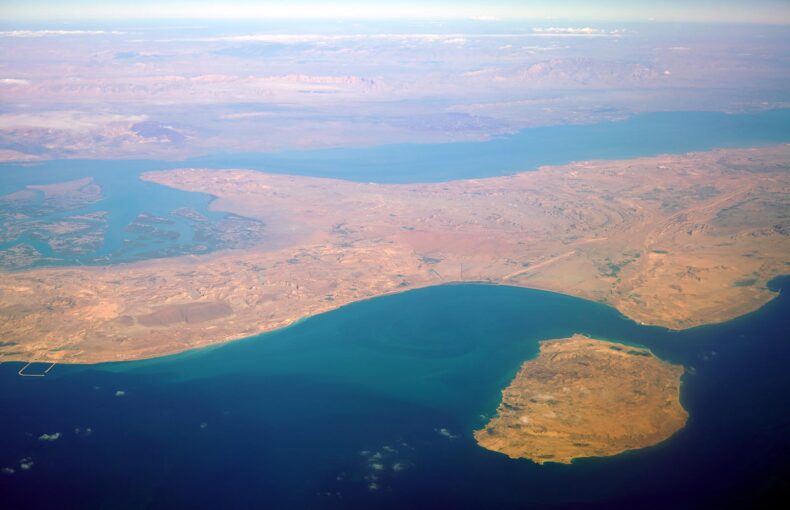How to buy AIS tracking data: a 6-Step guide
This guide simplifies AIS tracking data buying and provides you with six steps, so you buy only the data you need.
This guide will walk you through a series of recommended steps to follow when you decide to buy AIS tracking data. AIS data provides benefits to many types of businesses, from maritime shipping and associated maritime-related services to commodity trading and investment analysis.
We created this guide because, while we believe Spire offers the best and easiest way to buy AIS tracking data for most applications, we also recognize we’re not the only “fish in the sea” when it comes to AIS data, and we know that different organizations have different AIS tracking data needs and priorities.
With that in mind, this guide is meant to give some objectively valuable ideas for what AIS data characteristics you may need to prioritize, and what questions you can ask of AIS data providers. Feel free to get in touch if you have questions.
Step 1: Understand What You Are Buying
You might already know the fundamentals of AIS data. But if you don’t, this will be a good first step. Understanding some basics will help you to qualify your need when preparing to buy AIS tracking data and when comparing differences between provider offerings.
Recommended readings:
- Wikipedia entry for ‘AIS’: helpful for understanding the technology, history, and uses.
- U.S. government’s Navigation Center: a good resource for understanding how AIS works.
- White papers and case studies: Provider-created resources can, of course, be biased, but they can also provide insight into how AIS tracking is being used by specific companies.
While you do this very preliminary research, consider creating a spreadsheet to start tracking notes about the various AIS tracking data providers.
Step 2: Decide Exactly Why You Need It
AIS data providers have different strengths and weaknesses, depending on where they’ve focused their attention. If you aren’t already, you should get clear on what exactly you’ll be doing with the data. There are many potential uses for AIS tracking data. When you consider how you’ll be using it, keep in mind potential future uses. What gets the job done today may not be sufficient for tomorrow, so it can help to choose a provider that offers a broader functionality than you need.
You will also need to get clear on what data characteristics are high-priority and which characteristics are not useful to you. Some data characteristics to consider:
- Satellite AIS (S-AIS) vs terrestrial AIS (T-AIS). Do you need only satellite tracking data? Or both?
- Coverage and frequency. How much of the earth do you need data from? How frequently do you need updates? For AIS, coverage, and frequency will generally be a function of the number of satellites.
- Data “cleanliness.” Raw AIS data can be messy, cluttered with errors and redundancies. This can be especially true in crowded areas, like ports and locks. Is the raw AIS stream enough? Or do you need a more cleaned, optimized data feed?
- AIS message types. Not all AIS providers can deliver both class A and B AIS or all message types.
- Latency. Some organizations do very time-sensitive work (rescue work, or military operations) and have a need for very low latency data. But for most industries, this is not the case, and standard AIS tracking latency is fine. This is important to consider because, generally, the lower the latency, the higher the cost.
- Visualization features. Do you need to visualize the data? Or is that not necessary? If you require it, do you need out-of-the-box visualization features or do you have plans for how your team will implement that?
- Organized RESTful APIs. Do you need only the AIS tracking data? Or would you benefit from APIs that make it easier to do common tasks (e.g., return data from selected geographic areas, or compare data from different time ranges, filter for specific vessel types or characteristics)? Is current data sufficient or do you have need of predictive algorithms or historical data?
- Weather data. Do you need weather prediction data? Do you need a more advanced weather data set or are standard weather predictions okay?
- Other types of data? Do you have a need for other data that AIS data companies sometimes provide? For example, some providers have additional maritime vessel data sets that can be combined with AIS tracking data in useful ways (at Spire, we call this “enhanced vessel data”)
Step 3: Create a Budget
You may not require a budget but if you do, this may be a good time to think about it. After getting clear on how you’ll be using AIS, and how important you think it is to your business, this can be a good time to think about what you’d be willing to spend.
If you don’t yet have a sense of what AIS tracking data costs, it might help to look first at Spire’s AIS data pricing. Spire is not the only AIS provider, but we are one of the few that have our pricing information available online. This might give you an initial data point for pricing, and can help you understand how providers often bundle various features.
Step 4: Conduct Preliminary Research on Providers
If you haven’t already started one, create a spreadsheet with all the companies you view as potential providers. Don’t start talking to companies yet; it will help to get a sense for provider strengths and weaknesses before making contact.
One thing to be aware of is that there are two kinds of AIS data providers: direct providers of satellite AIS tracking, and resellers of data. When it comes to pros and cons of these two providers: direct data providers generally provide value because you’re closer to the data source and insight into the product roadmap, while resellers of data can provide add-on value, such as packaging the data for specific industry audiences or providing specialized APIs.
Most companies will offer access to data samples from their website. This is an important step in your research and will allow you to see if the data doesn’t suit your needs fairly quickly, which will speed up the process.
Things to include in your spreadsheet:
- A column for each of your important data priorities (e.g., coverage, frequency, different types of data) and preliminary notes on how the companies seem to address those needs.
- Notes on the data samples and their usefulness.
- Company prices/rates, if you can find them.
Download a free sample
Step 5: Make Contact, Ask Questions, and Set Up a Trial
When you’ve done enough research to where you have three or four companies you think are good potential candidates, start to talk to them. They’ll ask you a lot of questions and tend to steer the conversation, so you’ll want to make sure you cover the topics you know are important.
Here are some recommendations for topics to cover and questions to ask:
- Understand how their data/API offerings match your priorities. Get specifics and fill out your spreadsheet with more details.
- Discover the types of customers they serve. Do they think that they will be able to meet the needs of someone in your industry? Do they serve companies that are similar to yours?
- Discover pricing. Ideally, the pricing should be transparent and consistent across the board for all purchasers. If you get a sense that they are not upfront with their pricing, it may be a sign that they customize pricing based on perceived spending ability. How long is the contract? And will the length of that contract be a problem in the event you change providers? Is the pricing complicated? If it is complicated, might there be concealed costs that might be hard to predict?
- Ask about ease of use. How easy is it to query and analyze the data to solve the kinds of problems you’ll be facing? The more you know that you’ll face varying, changing challenges in the future, the more important ease of use and API resources become. If you know you’ll just have one solution to set up that will remain static for a long time, those factors become less important.
- Determine how modern and technology-focused they are. If you are solving complex, dynamic challenges and need cutting-edge solutions, it can help to get a sense of how modern and forward-thinking the AIS provider is. How quickly do they adjust their satellite hardware or software? Do they regularly add data sets or features? How many articles have been written about their work? (Articles referencing a company can be a good proxy for how much high-tech and interesting work they’re doing.)
- Evaluate onboarding and customer support. If you don’t have much of an engineering/tech team of your own, the degree of training and support becomes that much more important. Will there be some upfront education? Do they have support resources such as a detailed FAQ? Will support costs be included in their pricing? How available is their sales engineering team to support you?
- Ask for a data trial. This is separate from the data samples most companies provide early on. This is access to the actual data stream(s) and APIs the company offers. It is recommended to conduct thorough research and analysis of the data before asking for a trial. Simply because this allows you to further specify your needs and most companies will accommodate a customized trial. If you have a development team or data scientist, ensure they are involved in this process including the set-up, so you get maximum value from your trial period. If you need a resource to understand how to judge the value of a data stream, see our blog post The value of AIS.
Step 6: Hold Meetings and Make Your Decision as a Team
Take time to review your findings with all shareholders who have a stake in this solution. Share your spreadsheets and notes and talk about the pros and cons.
These decisions are no fun and so it can be tempting to rush them. But choosing the right AIS data provider is important. Once you start using AIS tracking data, you will likely tie a lot of processes to it, and the longer you wait, the more entrenched it will be and the harder it will be to easily switch to another source.
Any questions about this process? Schedule a chat with our team to discuss your AIS tracking data requirements
 Written by
Written by


